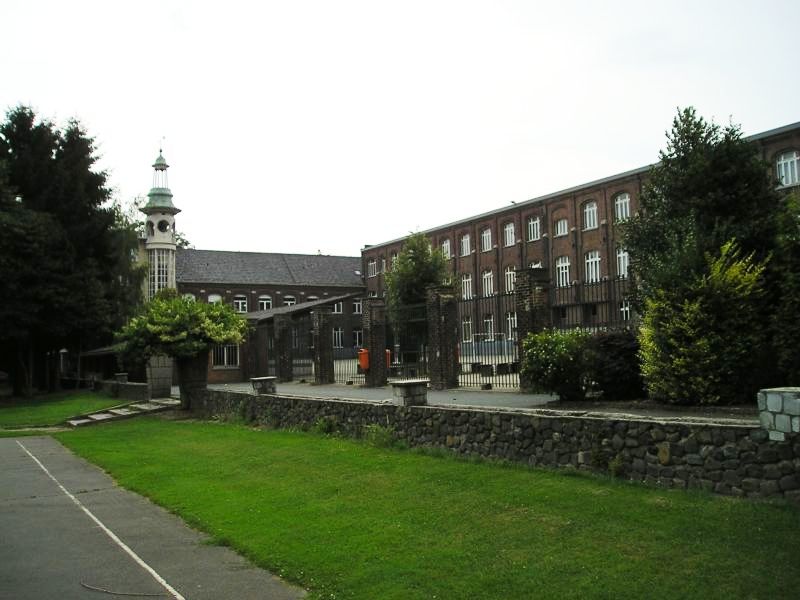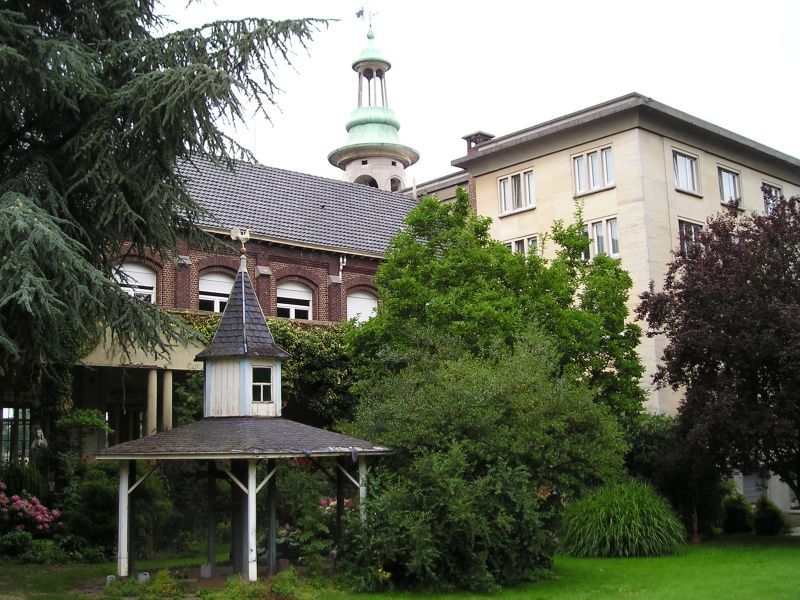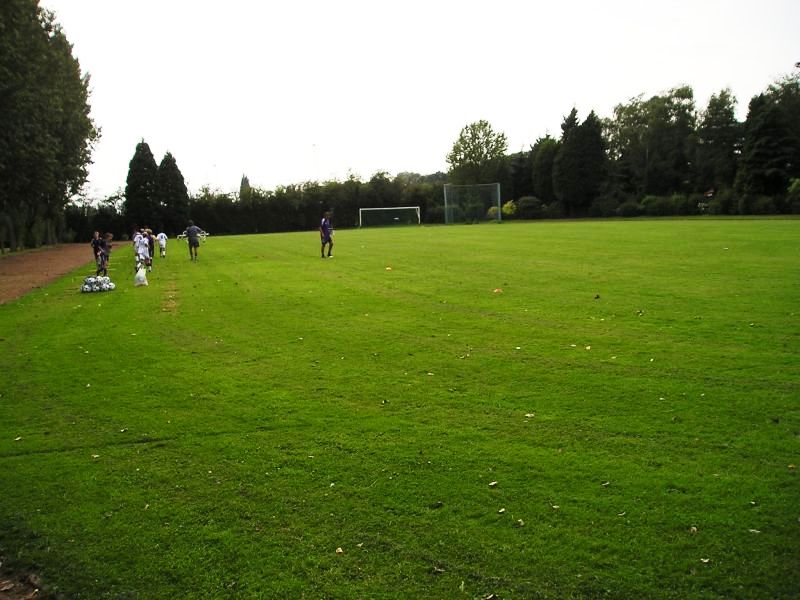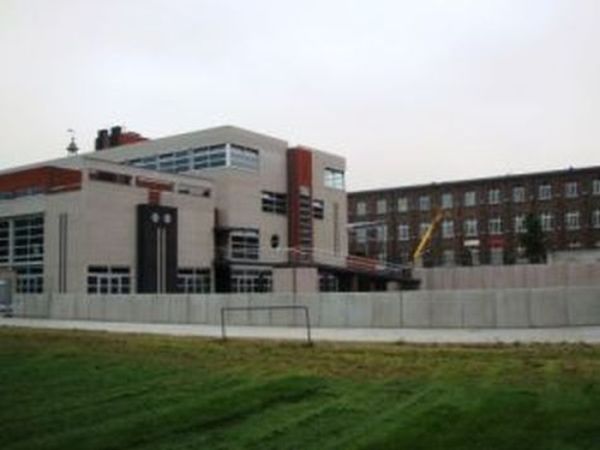The 26th of April 1901 the Congregation became owner of a castle with farm surrounded by 9 ha of woods and orchards, and situated between the Bergensesteenweg and Vogelenzang in Anderlecht.
The farm becomes an orphanage
In the spring of 1902 fourteen Brothers left their orphanage in Scheut to continue the same job in Anderlecht. The orphans provisionally stayed in the farm’s structure. In the beginning of the month of August 1903 the new building for the orphanage was put into use. That was the start of the actual Saint-Nicolas Institute.
Expansion

The orphans could learn the profession of shoemaker, tailor and printer. Most of the teaching rooms were spread all over the farm. In 1911, the school population had grown so much that new construction plans were inevitable. In 1914, the north wing of the central building was finished; it contained a festivity hall, six classrooms and two dormitories.
An ants’ nest
There was no lack on orphans. When the supply became impossible, they were replaced in 1917 by abandoned children. The friars now had to take care of 600 children. The available space was nearly enough to lodge half of them. So, the Brothers had to be especially creative to get all these children to sleep and to feed all those mouths. It was quite obvious that in such an overpopulated ants’ nest, the disciplinary problems were enormous.
Boarding school - non-residential school
From 1919 onwards the institute was no longer an orphanage, but a boarding school. 15 years later the institute already had a complete humanity section. 1n 1927 the first four non-residents entered. At that moment the school had 341 boarders. In 1930 they already had 441 boarders and 16 non-residents. In that particular year a new construction was built at the end of the central building with new classrooms, a chapel, bathrooms, study rooms, dormitories and play rooms.
On the run
At the beginning of World War II, the Brothers fled to France. Brother Althanaas stayed in Anderlecht to take care of the cows, the calf and the pigs. The Saint-Peters Hospital opened a ward in the Institute. And that was the reason that the Institute was not occupied by the occupier.
A strong growth
After the war the Saint-Peters Hospital still remained in the Institute for a while so that it got space problems because of the growth of boarders as well as non-residents. Despite the fact that lots of boarders were refused, there were already then 380 boarders and 182 non-residents.
Demolition and construction

At the end of 1945, the demolition of the castle had started. On July 16th 1946, Brother Leonard , who shortly was the headmaster of the Saint-Nicolas Institute and then General Superior, laid the foundation stone of the main building that would be constructed on the place of the earlier castle. The 5th of December 1948, that building was inaugurated.
Constant building

That was not the last construction. Because the number of pupils was growing, there was a constant lack of space. The 24th of June 1995 a brand-new infant school was inaugurated. The years before the dormitories were converted into classrooms and sports halls were built. In 2008 a large new building was put into use.
In 2018 the Saint-Nicolas Institute has 133 staff members and 1197 pupils; 161 of them are infants, 378 are pupils of the primary school and in the secondary division, they have 658 pupils.
The farm is rebuilt
In the beginning of this century the renovation of the farm and the annexes started by the VZW MINOR-NDAKO. This organization got the hereditary tenure of these buildings from the congregation to create a reception centre and an education house for foreign non accompanied minors.
Completely Dutch

Till 1962 the Saint-Nicolas Institute had as well a French speaking humanity division as a Dutch speaking division. At the end of the school year, the French speaking division was replaced by a Latin-scientific division besides the already existing Dutch speaking divisions.
From a boarding school to a non-resident school
Till the end of the seventies of last century the Saint-Nicolas Institute had especially pupils out of the surroundings. The closing of the boarding school thus had little influence on the school population that steadily kept growing. Thus an almost uninterrupted building history thanks to the leadership of Brother Jaak Timmers.
In a green environment

Although a great deal of the grounds was occupied by buildings, there were still a lot of open spaces with sports fields and trees left. The sports halls and the fields are constantly occupied, even when there is no school. The Saint-Nicolas Institute is a real oasis of rest even near the very busy roads just aside it.
The new building’s inauguration

Because the pupils’ rate of the Saint-Nicolas Institute was growing steadily, the complex of buildings was extended regularly. Now that the pupils’ rate passes 1200, the use of the recent new construction is of great importance. Even two infant classes took up their abode, because the infant school that was inaugurated in 1995, became too small.

The inauguration’s invitation of the new building
17th of May 2008, the recently completed new building was inaugurated and blessed solemnly. Minister Guy Vanhengel was one of the speakers. A large crowd came along to join this memorable event.





